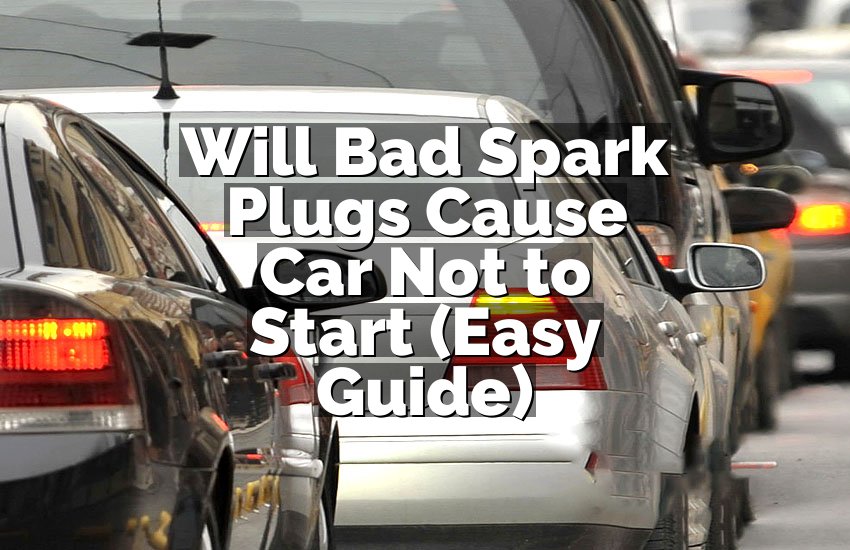Scratches on your car can be frustrating, especially when your vehicle looks all shiny and new, and then suddenly, there’s an unsightly mark! Whether you accidentally brushed against a wall, a stray branch scratched your paint, or your car got a nick from a shopping cart, it’s important to know how to deal with it. In this article, we’ll go over practical steps and easy-to-follow tips on how to remove those scratches and restore your car’s smooth finish.
Understanding the Types of Car Scratches
Before you dive into fixing those annoying scratches on your car, it’s important to understand the different types. Not all scratches are the same, and the approach to removing them will depend on their depth and severity. Car scratches generally fall into three categories: light scratches, medium scratches, and deep scratches.
Light Scratches (Surface Scratches)
Light scratches are the easiest to fix and are usually caused by minor accidents like brushing against a bush or a light scrape from a shopping cart. These scratches typically only affect the clear coat or the top layer of the paint.
How to Identify Light Scratches:
- The scratch is visible but doesn’t go beyond the clear coat.
- You can’t feel the scratch with your fingers.
- The scratch might appear as a faint white or colorless line on the surface.
How to Remove Light Scratches:
- Use a Scratch Removal Product: There are several scratch removal products on the market specifically designed to fix minor imperfections. These products contain mild abrasives that help to buff out the scratch.
- Apply Polish or Rubbing Compound: For light scratches, using a car polish or rubbing compound can help restore the shine and smoothness of your car’s paint.
- Use a Microfiber Cloth: After applying the scratch remover or polish, use a microfiber cloth to gently rub the product into the scratch in small circular motions.
Medium Scratches (Clear Coat Scratches)
Medium scratches are deeper than light scratches, affecting the clear coat and sometimes the paint beneath it. These scratches are usually caused by something a little more forceful, like a car door handle or a key.
How to Identify Medium Scratches:
- You can feel the scratch with your fingernail.
- The scratch might look a bit deeper and could change the car’s color.
- It may appear as a more pronounced line or mark on the surface.
How to Remove Medium Scratches:
- Use a Scratch Repair Kit: Many scratch repair kits available in stores are designed to fix these types of scratches. They often come with a compound that helps buff out the damage and restore the original finish.
- Buffing with a Dual Action Polisher: If you want a more professional finish, using a dual action polisher with the right polishing compound can help smooth out the scratch and bring the car back to its former shine.
- Wet Sanding (for deeper cases): If the scratch is deeper, you can wet-sand the area lightly. Be sure to use fine-grit sandpaper and carefully sand the scratch until it’s level with the surrounding paint. Afterward, polish the area to restore the gloss.
Deep Scratches (Paint Scratches)
Deep scratches go all the way through the clear coat and paint, sometimes exposing the metal beneath. These are the most serious types of scratches, and they’re often the hardest to repair without professional help.
How to Identify Deep Scratches:
- The scratch goes beyond the clear coat and into the paint layers or even the metal.
- You can feel the scratch easily, and the color of the paint is visibly affected.
- The scratch is usually more pronounced and wider.
How to Remove Deep Scratches:
- Touch-Up Paint: If the scratch is deep but not large, you can use touch-up paint that matches your car’s color. It’s available at most auto parts stores and online. You can apply the paint with a fine brush or a paint pen, and then smooth it over with a rubbing compound.
- Use a Scratch Repair Pen: These pens are useful for deep scratches that have exposed the paint. They come with a small applicator that allows you to carefully fill in the scratch with matching paint.
- Professional Repair: For the deepest scratches, it’s usually best to visit a professional. A body shop can properly fill and blend the scratch into the rest of the car’s surface.
Tools and Products You Need for Scratch Removal
When it comes to scratch removal, having the right tools and products is essential to getting the best results. Some tools are specifically designed to handle different types of scratches, so it’s important to pick up the right items before getting started.
Essential Tools for Car Scratch Removal
- Microfiber Cloths: These soft, lint-free cloths are perfect for buffing out scratches and applying products to your car’s surface. They’re gentle on the paint and won’t leave any fibers behind.
- Polishing Compound: Polishing compounds are used to smooth out and remove small scratches and swirl marks on your car’s surface. They are available in various formulations, so it’s important to pick one suitable for your car’s finish.
- Rubbing Compound: This is a slightly more abrasive product used for deeper scratches. It can help to smooth out a scratch and restore the shine.
- Scratch Remover Pen or Kit: Scratch removal kits typically come with a product that can be applied directly to the scratch, followed by a buffer to smooth out the area. They’re easy to use and perfect for quick fixes.
- Touch-Up Paint: For deeper scratches, matching touch-up paint is essential. Most car manufacturers provide paint codes, so you can find an exact match for your vehicle’s color.
- Dual Action Polisher: If you want to tackle medium scratches or polish the entire car, a dual action polisher is a powerful tool that provides an even, professional finish.
Products to Consider for Scratch Removal
- Turtle Wax Scratch Repair Kit: A well-known brand in car care, Turtle Wax offers a scratch repair kit that works for both light and medium scratches. It’s a good choice for those who want to quickly fix minor imperfections.
- Meguiar’s ScratchX 2.0: This product is ideal for polishing out light to medium scratches and swirl marks. It can also help restore the car’s shine and protect it from further damage.
- 3M Scratch Removal System: A more professional-level kit, 3M offers a full system that includes abrasive compounds and polishing pads. This is a great option for those tackling more stubborn scratches.
- TouchUpDirect Paint: If you have a deep scratch, using a touch-up paint that matches your car’s color is crucial. TouchUpDirect offers a variety of paint options for different vehicles.
Professional Help for Car Scratch Removal
While DIY methods can work wonders for minor and medium scratches, some scratches require a professional touch. If you’re not comfortable working on your car or if the scratches are too deep, it’s best to seek professional assistance.
When to Seek Professional Help
- Deep Scratches That Penetrate to the Metal: When a scratch exposes the metal beneath the paint, it can lead to rusting. Professional repair will ensure the area is properly treated and repainted.
- Large or Multiple Scratches: If your car has several large scratches or if the area of damage is extensive, it might be more cost-effective to have the whole section of your car repaired by professionals.
- No Time for DIY Repairs: If you’re short on time or don’t have the proper tools, a professional can quickly take care of the issue for you, leaving your car looking like new.
- Quality Finish: Professionals use specialized tools that ensure a flawless finish. If you’re looking for the best results, visiting a body shop or detailer is the way to go.
What to Expect from Professional Scratch Repair
- Assessment of Damage: A professional will first assess the severity of the scratch and determine if it can be fixed without repainting or if a full touch-up is needed.
- Proper Filling and Sanding: If needed, they’ll fill the scratch with appropriate materials, sand the area smoothly, and blend it with the surrounding paint to ensure a seamless look.
- Polishing and Finishing: Finally, professionals will polish the area and apply a protective coat to ensure the repair lasts.
I hope these tips help you remove those annoying scratches from your car and bring back that shiny, flawless look. Whether you decide to fix the scratches yourself or take your car to a professional, it’s always great to know how to handle these situations and restore your car’s finish. Remember, a little care and attention can go a long way in keeping your car looking as good as new.
Frequently Asked Questions (FAQs)
Is it possible to fix deep scratches on my car?
Yes, deep scratches can be fixed with the right tools and products. For deep scratches that expose the metal beneath, you’ll need to use touch-up paint and sometimes sand the area down before painting. If you’re unsure, visiting a professional is recommended to ensure the best results.
Can I fix a scratch on my car without professional help?
Absolutely! Many minor and medium scratches can be repaired with the help of scratch removers, rubbing compounds, or touch-up paint. For more serious scratches, it may require professional help, but DIY methods can work wonders for smaller issues.
Do I need a special product to remove scratches on my car?
While there are many specialized products on the market, you don’t always need a fancy product to remove scratches. For light scratches, basic car polish, rubbing compounds, or even DIY scratch remover kits can do the job. The key is to match the product to the severity of the scratch.
Is it safe to use rubbing compound on car scratches?
Yes, rubbing compounds are generally safe for car paint if used correctly. Make sure you choose the right compound for your car’s finish and apply it gently. Excessive use or harsh rubbing can damage your paint, so always follow the product instructions.
Can touch-up paint fix all car scratches?
Touch-up paint works well for deep scratches that have gone beyond the clear coat, but it may not fix every type of scratch. For minor scratches, you may need to use other products like rubbing compounds or scratch removers.
Do I need to buff my car after using scratch remover?
Buffing after applying scratch remover helps to smooth the repaired area and restore the shine to the paint. Using a microfiber cloth or a dual action polisher can achieve a smooth, glossy finish after removing the scratch.
Is it necessary to wax my car after scratch removal?
Yes, waxing your car after scratch removal is a good idea. Wax adds a protective layer to your paint and enhances the shine. It helps protect the car from future scratches and other environmental factors like UV rays and water damage.
Can a professional remove car scratches permanently?
A professional can remove scratches and restore your car’s paint with lasting results, especially if the scratch is deep. They may repaint or polish the damaged area, ensuring the repair is seamless and durable.


